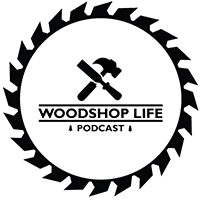Support us on Patreon: https://www.patreon.com/woodshoplife
Guy
1) Hi guys, huge fan of the podcast. I just have a question regarding sheet goods. I haven’t listened to every episode yet so I apologize if this was already covered. When I make cabinet carcasses I generally use some sort of store bought veneered plywood. I find it difficult finding plywood that is close to flat. It’s not as much of an issue when I break it down into smaller pieces, but when I make a larger cabinet it is very difficult to get square bc the plywood rarely straight. I put a face frame on it which Is square for the cabinets door/drawers, but often the carcass itself still has a bit of a visible curve in the panels. Any advice on his help improve this? -Timber Tables
2) Hey guys, love the show and appreciate how much you cover, unlike those other woodworking Podcasts 🙄. My question is about edge banding. Fastcap has a peel and stick edge banding (Fastedge). It’s obviously easier to apply than the iron-on banding, but is it as durable? Are there any downsides to this vs traditional edge banding?
Thanks,
Shannon
Nashville, TN
Sean
1) Is there anything you look at differently when you buy slabs to make into boards vs just buying actual boards? I have a saw mill somewhat close that I have actually gotten good prices on slabs. I don’t use live edges and cut them off. Thanks, Ryan
2) I thought of a good question that might help some of us beginning woodworkers: I know that everyone makes mistakes (except Guy), but what kinds of mistakes do you see yourself making fewer and fewer of as you became seasoned pros? In other words, are there certain kinds of mistakes that you should find yourself growing out of as you develop as a woodworker? -Adam
Huy
1) Hello again! So I am going to be moving my shop to a new garage and I wanted to upgrade the flooring before I move my stuff in. It currently has a basic concrete floor with quite a few cracks. I was considering either using polyurea or epoxy, but wanted to get your insight and see what you guys currently use and also what you would upgrade to if you had the chance? Garage dog Woodworks
2) Hey guys! Thanks for the great podcast. I had a question about table-saw blade sizes. What are the pros and cons of 10 and 12 inch table saws? Is one better than the other? And if you could do it all over again would you choose a 12 inch saw as I know you all have 10 inch saws. -Jeff
